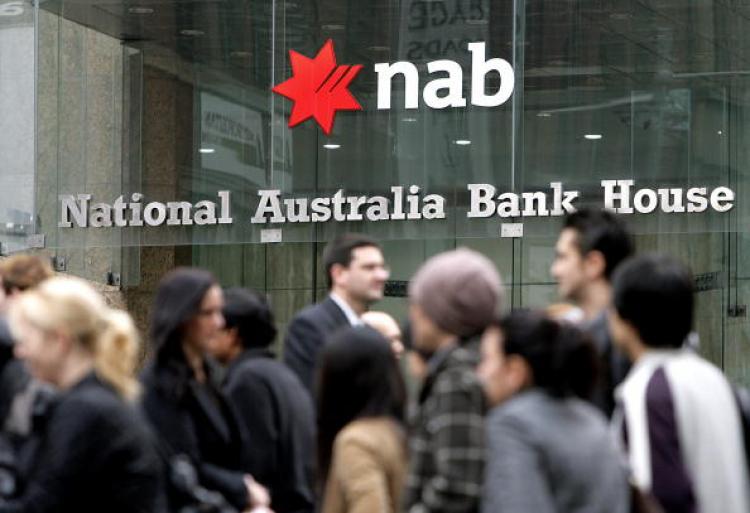Feb. 16 (Bloomberg) — Australia’s four biggest banks and their New Zealand unit may have their ratings cut by Moody’s Investors Service on concern that access to overseas markets for funding will be “significantly restrained.”
Australia & New Zealand Banking Group Ltd., National Australia Bank Ltd., Commonwealth Bank of Australia and Westpac Banking Corp. hold Moody’s second-highest Aa1 rating. They’re likely to remain in the Aa category after the review, Moody’s said in a statement today.
The Australian and New Zealand currencies pared gains after the announcement. Moody’s said funds from capital markets account on average for 43 percent of the lenders’ liabilities, making them vulnerable to shifts in investor confidence. Still, the banks have bolstered local deposits and curbed a funding shortfall, an analyst at Southern Cross Equities Ltd. said.
“Moody’s seems about 12 months too late with this concern,” T.S. Lim, an analyst at Southern Cross in Sydney, said by telephone. “The banks have just reported and they’ve shown wholesale funding isn’t an issue for them anymore.”
Credit-default swaps insuring the debt of Australia’s four biggest banks rose 3 basis points to 107 basis points as of 7:18 p.m. in Sydney, according to Nomura Holdings Inc. Swaps on the banks’ subordinated debt rose 4 basis points to 153 basis points, Nomura prices show.
Currency Trading
The Australian dollar traded at 99.94 U.S. cents as of 8:14 a.m. in London from 99.64 cents yesterday in New York after earlier rising as high as $1.0018. The so-called kiwi was at 75.34 U.S. cents from 75.19 cents, after climbing to 75.63 cents.
Westpac “continues to attract strong investor support for its wholesale funding,” Australia’s second-largest bank said in a statement. “The group has taken a number of steps in recent years to diversify its funding sources and improve its funding tenor, allowing it to continue to support its customers.”
Customer deposits rose A$8 billion ($8 billion) in the quarter ended Dec. 31, helping Westpac buy back $2.1 billion in government-guaranteed bonds, the Sydney-based bank said yesterday. A further A$7 billion in term wholesale funding was raised in the three month period, it said.
The ratings outlooks for ANZ, Commonwealth Bank and Westpac had been negative since March 2009, and NAB since August 2008, Moody’s said.
“The review will focus on the Australian banking system’s structural sensitivity to conditions in the wholesale funding market,” Patrick Winsbury, a Sydney-based senior vice president at Moody’s, wrote in the note. Market funds comprise an average 43 percent of total liabilities for the four banks, he said.
Reducing Dependence
ANZ, Australia’s third-largest bank by market value, has “been working hard” to reduce its reliance on wholesale funding, which now accounts for about one third of the Melbourne-based lender’s funding mix, Group Treasurer Rick Moscati said in a statement today.
National Australia Bank, the nation’s fourth-largest lender, is “committed to maintaining strong capital, funding and liquidity positions,” according to a statement from the Melbourne-based lender today.
The bank has raised about A$12.6 billion of unsecured term wholesale funding this financial year as part of its plan to raise A$25 billion to A$30 billion in the 12 months ending Sept. 30.
The Aa2 long-term senior unsecured debt and deposit ratings of New Zealand’s four major banks, ANZ National Bank Ltd., ASB Bank Ltd., Bank of New Zealand, and Westpac New Zealand Ltd., may also be downgraded, according to a separate statement from the agency.
The increase in funding costs is likely to slow, Commonwealth Bank Chief Financial Officer David Craig told reporters last week. The Sydney-based company is the nation’s largest lender.
–Luo Jun, Jason Scott. With assistance from Henry Sanderson in Beijing. Editors: Chitra Somayaji, Iain Wilson
By Bloomberg News – Feb 16, 2011 11:06 AM GMT+0100
Source: Bloomberg
